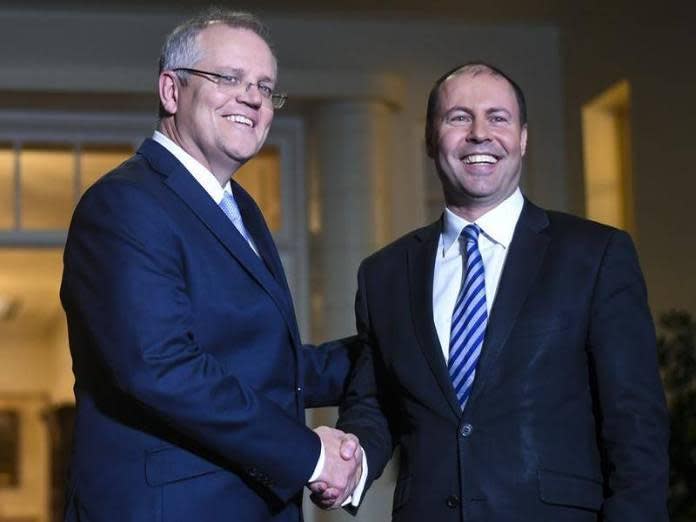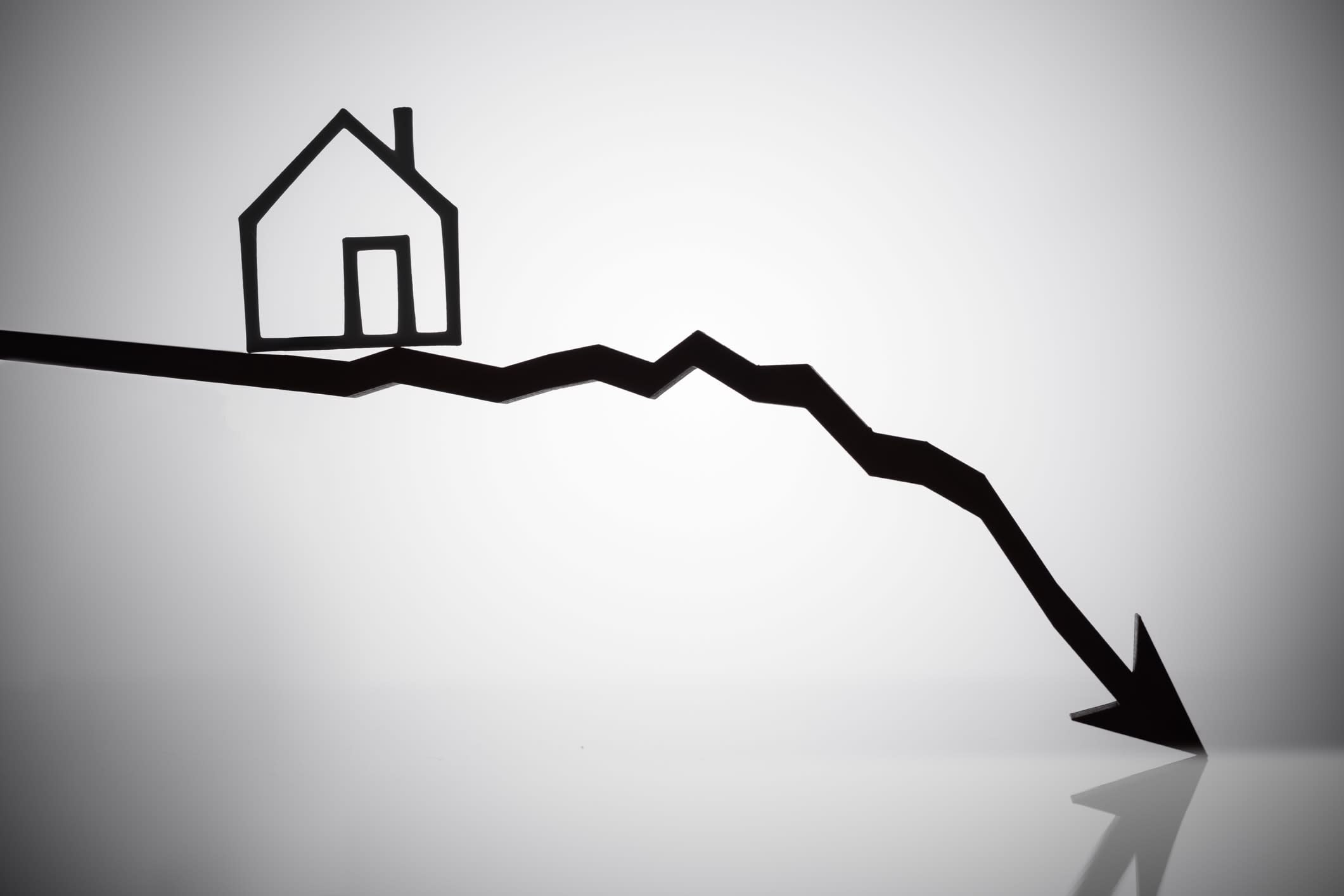
This may be Josh Frydenberg’s first budget, but it has Scott Morrison’s fingerprints all over it. The Treasurer’s marketing brief is on point: this is a budget for “teachers, tradies and nurses”.
Of course, this is an election budget, too. It's arrived earlier than the Easter bunny with a basket crammed full of goodies, courtesy of robust revenue and brisk resources exports. And this particular Easter bunny has something for everybody.

Unashamedly pitched at the heart of middle Australia, the 2019-20 budget has two core purposes: give something to everyone; and wedge Labor in the process. The ALP has to either outspend the government and appear fiscally irresponsible, or preach austerity and look like Scrooge. Neither option is attractive.
The budget’s centrepiece comprises further tax cuts for low and middle-income earners, as well as significant small-business marginal tax rate reductions (to 25 per cent) and instant deductions for businesses with a turnover of up to $50 million per annum. This represents an attempt by the Coalition to salvage parts of its corporate tax cut policy, abandoned by Malcolm Turnbull in August 2018.
There’s also money for the very young (preschoolers); pensioners (a one-off payment for energy bills); for carers, pharmacists, mental health and the disabled; and public broadcasting (boosts to ABC and SBS funding).
Fixing a hole
The first surprise was a forecast surplus of $7.1 billion, well above the $4.1 billion forecast in the December Mid-Year Economic and Financial Outlook (MYEFO), and the first since the 2007-08 Howard-Costello budget. The budget predicts a total of $45 billion in surpluses through 2022-23.
Shipping steel
However, the government’s surpluses have feet of clay – or iron, more accurately. Robust resources prices have delivered budget revenue flows that far outpaced 2018 forecasts. Iron ore exports reached almost $100 per tonne in January 2019, a 50 per cent increase on late-2018 prices. This is partially a one-off increase, due to supply shortages following the dam disasters in Brazil. Consequently, China has sourced more of its iron ore from Australia. Similarly, thermal coal exports are tracking strongly, although slightly lower than mid-2018. But China’s flatlining domestic economy and further declines in demand will place further downward pressure on coal export prices. Part of the slack will be taken up by strong global demand for liquefied natural gas.
Treasury is not bullish regarding iron ore prices over the forward estimates, recognising that falls in iron ore export prices will weigh heavily on the budget bottom line. Even a 25 per cent fall in prices would cost the budget billions, immediately placing the predicted surpluses in jeopardy.

In every dream home
The housing market may be undergoing a major correction – or collapse, depending on your perspective – but you wouldn’t know this if you peruse the budget. First-home buyers and saving schemes have been ignored and negative gearing didn't rate a mention. Prepare to hear much, much more about negative gearing in the buildup to the election, though.
I’m the taxman
The tax cuts are clearly election bait. In 2018, the government announced wholesale changes to the tax system, promising significant cuts from 2022. This budget has brought the cuts forward, boosting the funding for the cuts from $140 billion to $158 billion.
The big news is that the government has cut the marginal tax rates once again, from 32.5 per cent to 30 per cent, benefiting all wage and salary earners – all 10 million of them – in the $45,000 to $200,000 income bracket. Low and middle-income earners will also see an increased income tax offset from 1 July this year. Moreover, the Coalition promises taxes won’t rise above 23.9 per cent of GDP. This, the government reasons, is surely the secret sauce; the middle-class giveaway that could return the Coalition to office.
Taking care of business
In 2019-20, the instant asset write-off, which benefits businesses from sole traders to medium-sized enterprises (with the turnover limit increased $50 million per annum) has a higher ceiling of $30,000 per purchase.
Super trooper
New superannuation rules will allow over-65s to ramp up their super contributions, a benefit currently available only to under-65s. A relaxation of the work hours rules will also come into effect.
Doctor, doctor
Given stronger revenues, the government has spent up on health, putting $5.5 billion in funding into the Medical Future Fund, reducing x-ray and ultrasound expenses for patients, and a boost for cancer research and services. Pharmacists will benefit from an extra $215 million in PBS dispensing fees over three years.
Building the perfect beast

About $525 million will be invested in 80,000 apprenticeships, but builders and trades will be the major beneficiaries of the government’s $100 billion decade-long infrastructure boost, a $25 billion increase on 2018-19. Despite a recent report finding infrastructure investments can't keep up with immigration, governments continue to think they can.
Some infrastructure spending details emerged prior to the budget, the most noteworthy being Mr Morrison’s promise to contribute $2 billion to a Geelong-Melbourne fast rail link, if the Victorian government matches the funding. The federal and Victorian governments have already inked the $10 billion Melbourne airport link agreement.
Money for nothing
What do you give the regulator who has everything? A bigger budget, obviously. In the wake of the banking royal commission, the financial regulators, APRA and ASIC, will see a significant boost to their personnel and supervisory powers, augmented by a $600 million funding increase.
Working on the weekend
Treasury’s Mid-Year Economic and Financial Outlook in December predicted a stronger surplus ($4.1 billion in 2019-20) and solid growth (3 per cent). Unemployment is expected to remain steady at 5 per cent (4.9 per cent last February). Underemployment remains an issue; there are fewer full-time jobs, and workers want more hours. Despite these strong numbers, Australian wages have flatlined (the slowest sustained period since World War II). Although this has produced low inflation, it's also resulted in significant downward pressure on retail, car sales and house prices.
The Morrison government promised to create 1.25 million jobs over five years, a promise reiterated in the 2019-20 budget. However, this isn't a particularly ambitious target, given that the Australian economy has produced more than a million jobs on 10 occasions.
Back on the chain gang
Australian economic growth over the past 20 years has been forged by unprecedented terms of trade fuelled by the two-track economy on the west and east coast resources and housing sectors. On the east coast, property price growth, tourism and the education sector have driven wealth and prosperity.
But the past 12 months have seen dramatic changes in fortune. The Sydney and Melbourne property markets have sagged, while wage stagnation remains a serious problem. Neither government nor business has addressed this issue, as markets have persistently failed to deliver above-inflation wage rises. Consequently, the Australian household debt to GDP is more than 120 per cent, while household debt to income is close to 200 per cent, one of the highest levels worldwide. Concomitantly, wealth is falling as property prices fall. Combined with wage stagnation, consumer spending is declining, with consequential effects upon the retail sector.
Given this environment, the government has sought to inject stimulus into the economy via a combination of tax cuts, infrastructure investment and small-business asset write-offs. In fact, this is an attempt to ameliorate the worst effects of the wages recession by handing cash back to households in the form of tax cuts and small-business deductions.
It’s a risky strategy, but the many Easter eggs in this budget might just do the trick. They may even win an election.





